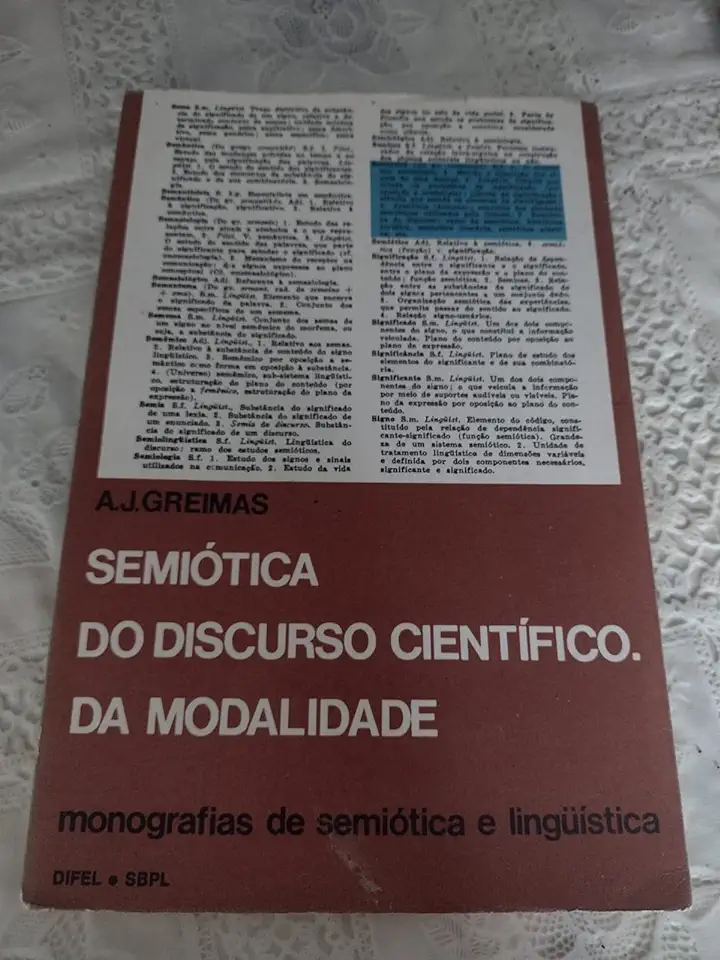
Semiotics of Scientific Discourse. of the Modality - A. J. Greimas
Semiotics of Scientific Discourse: Unveiling the Language of Science
In the realm of scientific exploration, language plays a pivotal role in conveying complex ideas, theories, and discoveries. However, the language of science is not merely a tool for communication; it is a rich tapestry of signs, symbols, and structures that shape our understanding of the natural world. In his groundbreaking work, "Semiotics of Scientific Discourse," A. J. Greimas delves into the depths of scientific language, revealing its intricate semiotic mechanisms and their profound impact on our perception of scientific knowledge.
Unraveling the Language of Science
Greimas's semiotic analysis of scientific discourse provides a unique lens through which we can examine the ways in which scientific concepts are constructed, communicated, and interpreted. He argues that scientific language is not simply a neutral medium for transmitting information; rather, it is a dynamic system of signification that actively shapes our understanding of reality.
By meticulously dissecting the linguistic structures of scientific texts, Greimas uncovers the underlying patterns and regularities that govern the production and interpretation of scientific knowledge. He demonstrates how scientific discourse relies on a complex interplay of metaphors, analogies, and other rhetorical devices to convey abstract concepts and complex phenomena.
Metaphors and Analogies: The Building Blocks of Scientific Discourse
Metaphors and analogies emerge as central elements in Greimas's analysis of scientific discourse. He argues that these figures of speech are not mere embellishments; they are essential tools for bridging the gap between the abstract and the concrete, allowing scientists to make sense of complex phenomena by drawing parallels to familiar experiences.
Greimas provides numerous examples of how metaphors and analogies permeate scientific discourse, from the use of "wave-particle duality" in quantum mechanics to the comparison of the human brain to a computer. These linguistic devices enable scientists to conceptualize and communicate complex ideas that would otherwise remain elusive.
The Role of Modality in Scientific Discourse
Another key aspect of Greimas's analysis is his exploration of modality in scientific discourse. Modality refers to the ways in which scientific statements are presented as certain, possible, or probable. Greimas argues that modality plays a crucial role in shaping the reader's perception of scientific knowledge.
By examining the linguistic markers of modality, such as modal verbs and adverbs, Greimas reveals how scientific discourse constructs a hierarchy of knowledge, ranging from absolute certainty to mere speculation. This analysis highlights the dynamic nature of scientific knowledge, constantly evolving and subject to revision in the light of new evidence.
Implications for Scientific Communication and Education
Greimas's semiotic analysis of scientific discourse has profound implications for scientific communication and education. By understanding the intricate workings of scientific language, we can improve the way we communicate scientific knowledge to diverse audiences, making it more accessible and engaging.
Moreover, Greimas's work provides valuable insights into the nature of scientific knowledge itself, emphasizing its provisional and evolving character. This understanding can help foster a more critical and reflective approach to scientific information, encouraging readers to question and evaluate the claims presented in scientific discourse.
Conclusion: Embark on a Journey into Scientific Semiotics
"Semiotics of Scientific Discourse" is a seminal work that offers a unique and insightful perspective on the language of science. A. J. Greimas's meticulous analysis of scientific discourse unveils the hidden mechanisms that shape our understanding of the natural world. By exploring the role of metaphors, analogies, and modality, Greimas provides a deeper appreciation of the complex interplay between language and scientific knowledge.
This book is a must-read for linguists, scientists, educators, and anyone interested in the intricate relationship between language and thought. Embark on a journey into the semiotics of scientific discourse and discover the fascinating ways in which language constructs our understanding of the world around us.